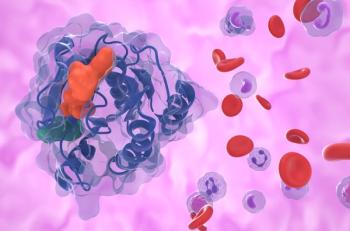
A Conversation with Jeffrey Sparks, M.D., M.M.Sc., About a New Study About ILD Progression Among RA patients
The Arthritis Foundation is funding a study to help predict the onset and progression of interstitial lung disease in rheumatoid arthritis patients
A research team led by Jeffrey Sparks, M.D., M.M.Sc., an associate professor of medicine at Harvard-affiliated Brigham and Women’s Hospital in Boston, is looking to shine a spotlight on the often-overlooked comorbidities associated with rheumatoid arthritis (RA), a chronic autoimmune condition characterized by persistent pain, unpredictable flare-ups and joint damage.
Among these coexisting health issues, interstitial lung disease (ILD) stands out as a serious complication that can significantly impair patients’ quality of life. Despite advances in RA treatments over recent decades, ILD in RA patients has not seen comparable improvement, and its prevalence has doubled, making it a growing concern for the medical community.
To address this issue, the Arthritis Foundation has awarded a research grant to Sparks and his Brigham and Women’s Hospital team, which will go towards a way to identify cellular biomarkers that can aid in early diagnosis, monitoring and prediction of ILD progression among RA patients.
By focusing on early detection through innovative techniques such as RNA sequencing and routine CT scans over a two-year period, the researchers hope to uncover early signs of lung involvement before severe symptoms develop. This approach could lead to the development of targeted therapies to prevent or slow ILD progression, which currently affects roughly 8% to 12% of individuals with RA, Sparks explains.
The research team also includes Edy Kim, M.D., and Kevin Wei, M.D., who are assistant professors of medicine at Harvard Medical School.
Sparks spoke to Managed Healthcare Executive about the study and how it’s designed to find results that will hopefully slow down or prevent the progression of ILD in RA patients
How do you envision the cellular biomarkers identified through this study influencing the early diagnosis and management of ILD in RA patients?
First, our goal is to identify a cellular signature associated with the presence of ILD. Second, we may find cells associated with the progression of ILD. These could be useful to clinicians for both diagnosis, monitoring and treatment. Finally, we hope that the circulating cells may lead to new drug targets that may lead to future treatments.
What are the biggest challenges you anticipate in translating the findings from RNA sequencing and imaging into practical clinical tools?
We are using some innovative methods to identify circulating cells as well as to quantify lung abnormalities on scans. Both aspects would need to be scaled in order to bring down cost and to analyze quicker so that this could be available to clinicians during clinical care.
Could you elaborate on how the study is structured and what specific insights you hope to gain from routine CT scans over the two-year period?
This is a prospective study that includes five sites across the U.S. We enroll people with early RA, diagnosed within two years, often within a few months. We then perform study visits every six months to monitor their joints, lungs, and general health. We do a CT scan of the chest at baseline and then two years later to look for the presence and progression of ILD.
Given that ILD prevalence is increasing among RA patients despite advances in RA treatment, what changes in clinical practice do you foresee to better monitor and prevent lung involvement?
We are still sorting out why the prevalence of ILD in RA is increasing. It may be due to increased recognition or due to patients living longer. It is also possible that other factors, such as pollution or medications, could be contributing. We need to pinpoint the causes for both the presence and progression of ILD in patients with RA.
How might your research pave the way for the development of targeted therapies specifically aimed at preventing or slowing the progression of ILD in RA patients?
We will be able to find specific cells that are circulating in the blood in RA patients with ILD or those whose ILD progresses. This may let us focus on specific pathways or markers that could pave the way to new drugs.
Newsletter
Get the latest industry news, event updates, and more from Managed healthcare Executive.


















































